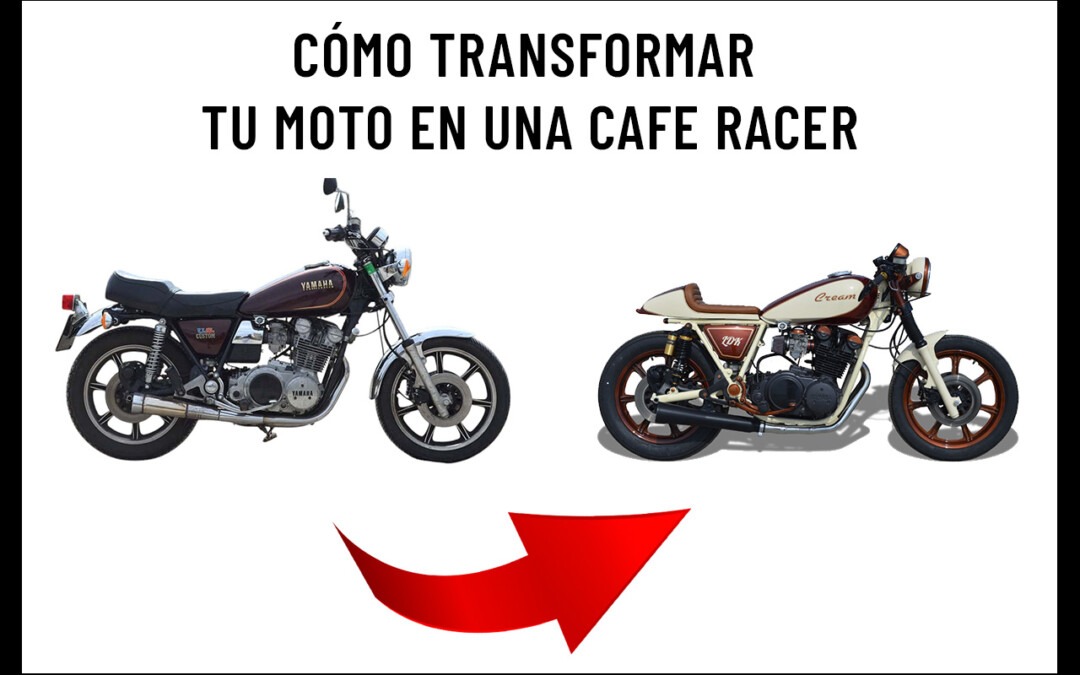Transforming your motorcycle into a cafe racer isn’t just a matter of aesthetics: it’s a statement of style and passion for classics. If you’ve ever dreamed of owning a bike that combines speed, elegance, and a vintage spirit, you’ve come to the right place. In this comprehensive guide, we’ll take you step-by-step through everything you need to know to turn your motorcycle into a true cafe racer.
What is a cafe racer motorcycle?
A cafe racer is a type of custom motorcycle inspired by British motorcycles from the 1950s and 1960s, created to be fast, lightweight, and with a minimalist design. Its name comes from the young men who raced from one cafe to another in London, competing on short trips. The style is characterized by solo seats, low clip-on handlebars, aerodynamic tailpipes, sport exhausts, and a forward-leaning riding position.
Choosing the ideal base motorcycle
Not all bikes are equally suitable for a cafe racer conversion. The most popular are classic naked bikes with twin- or single-cylinder engines. Some recommended options:
– Honda CB (350, 500, 750)
– BMW R (R65, R80, R100)
– Yamaha XJ or SR
– Suzuki GS
– Harley-Davidson Sportster (for a more muscular cafe racer)
The important thing is that it has a simple and stable chassis, allowing for easy customization and a good mechanical foundation.
Phases of transformation
Converting a motorcycle into a cafe racer can be divided into several stages:
1. Disassembly
Start by removing all the parts you won’t be using: the original seat, tail, fenders, lighting, fairing (if applicable), and unnecessary supports. This phase allows you to see the skeleton of the bike and begin planning.
2. Chassis modifications
Many cafe racers have their rear subframes shortened or redesigned to accommodate a solo seat with a bullet-style tailpipe. This requires welding and, in many cases, homologation. At Lord Drake Kustoms, we do it with precision and guaranteed safety.
3. Suspensions and wheels
You can upgrade the front and rear suspension with sport or classic components. It’s also common to replace the wheels with wire-tipped rims and install vintage-style tires, such as Firestone Deluxe.
4. Seat and tank
The seat is usually flat with a built-in tailpiece. The tank can be kept or replaced with a slimmer, more classic one. The seat-tank combination largely defines the cafe racer profile.
5. Handlebar and riding position
Clip-on handlebars or sporty clip-ons are typical. They force a more forward-leaning, aggressive, racing-style stance. Rearsets for rearward-mounted footpegs can also be installed.
6. Exhaust and sound
A good exhaust transforms not only the sound but also the soul of the bike. You can opt for homemade exhausts or specialized brands. Make sure you comply with regulations if you plan to ride legally.
7. Painting and finishes
This is where your personal style comes in: vintage paint, polished metal, stripes, custom logos… At Lord Drake Kustoms, we do exclusive paint jobs and handcrafted finishes to make your motorcycle unique.
Legalization and homologation
In Spain and many European countries, any structural modification must be approved. This includes the frame, exhausts, lighting, and suspension. We handle the entire approval process so you can just enjoy your motorcycle.
Why do it with professionals?
Although many attempt to customize their motorcycles on their own, working with a specialized workshop like Lord Drake Kustoms guarantees quality, safety, technical advice, personalized design, and legality. We’ve been turning dreams into reality on two wheels for over a decade.
Ready for your cafe racer project?
If you want your bike to stand out, speak volumes, and become a unique piece, you’re one step away from making it a reality. Contact us to start your cafe racer conversion project, wherever you are in the world. You can also visit our custom bikes section for inspiration.

